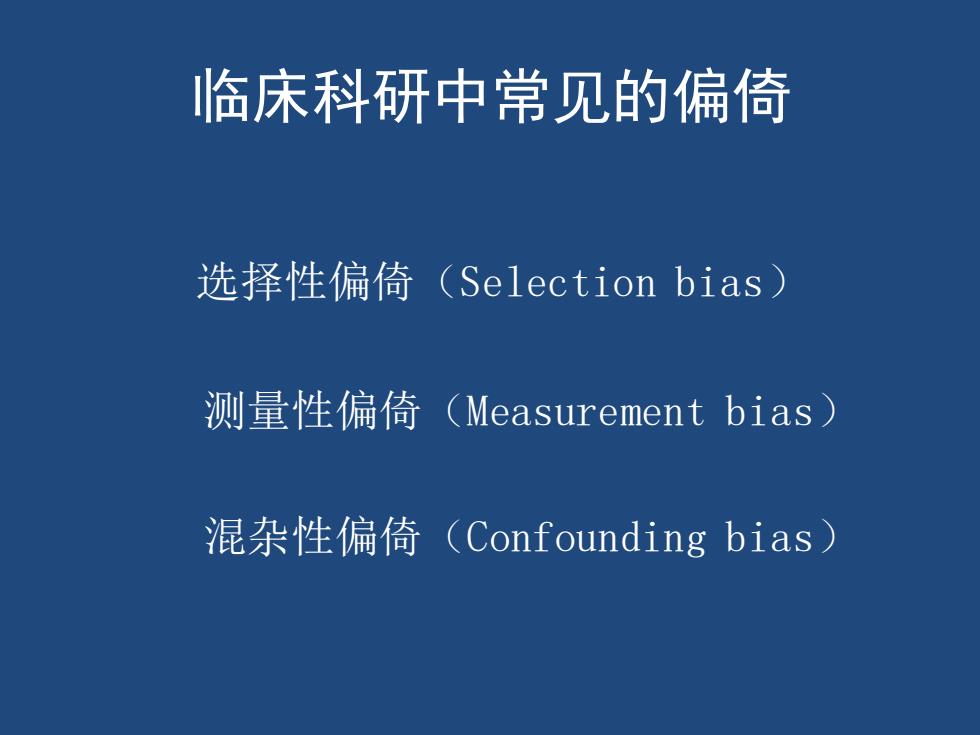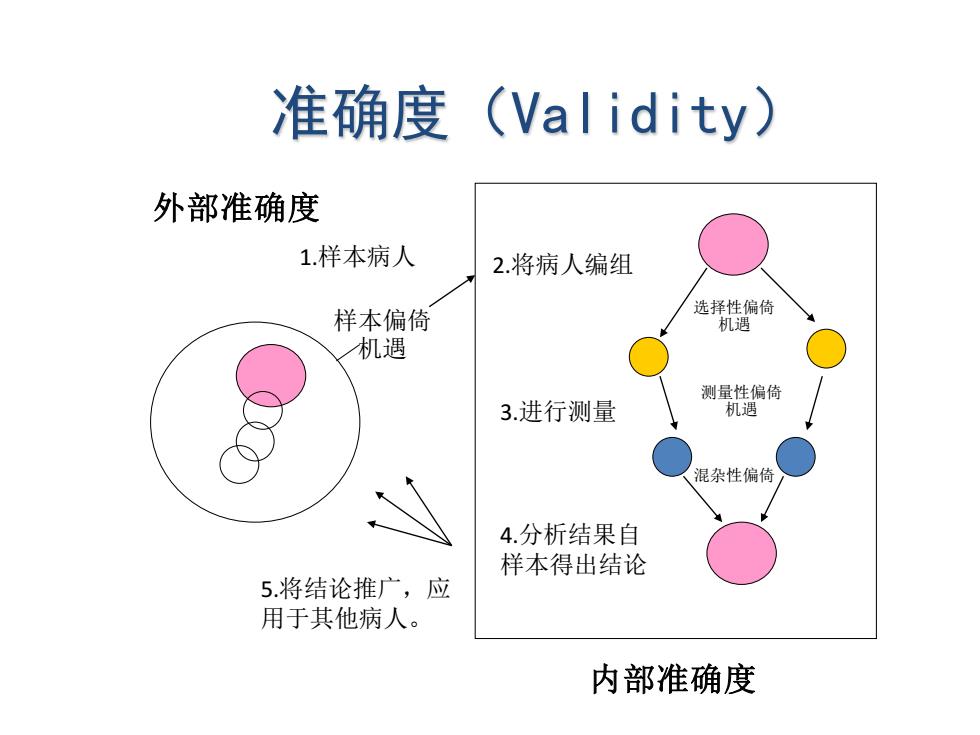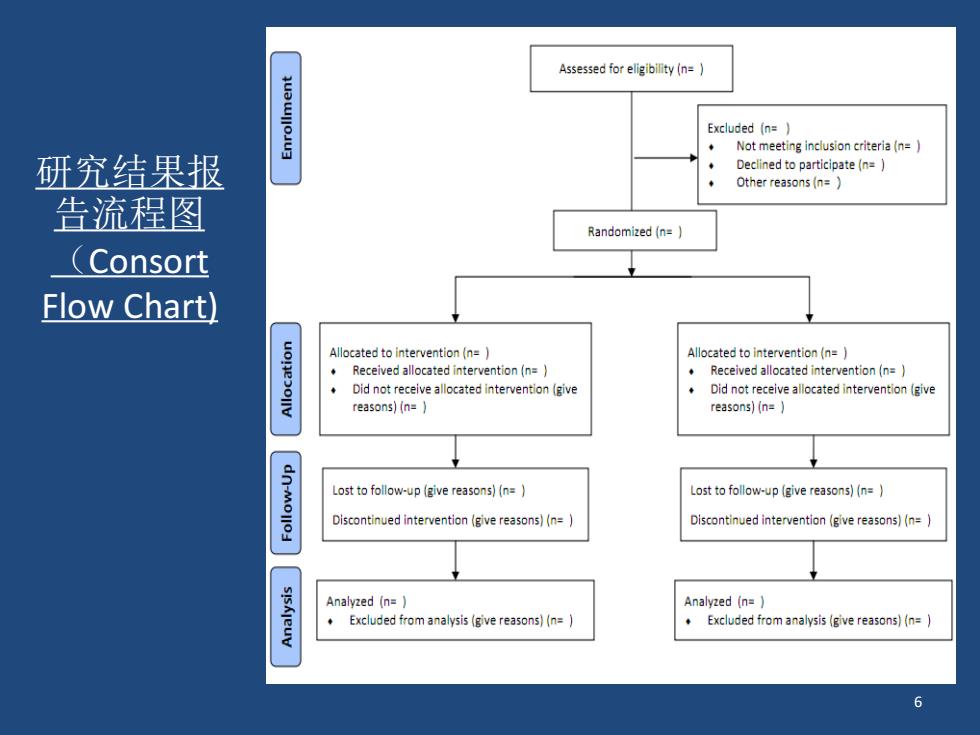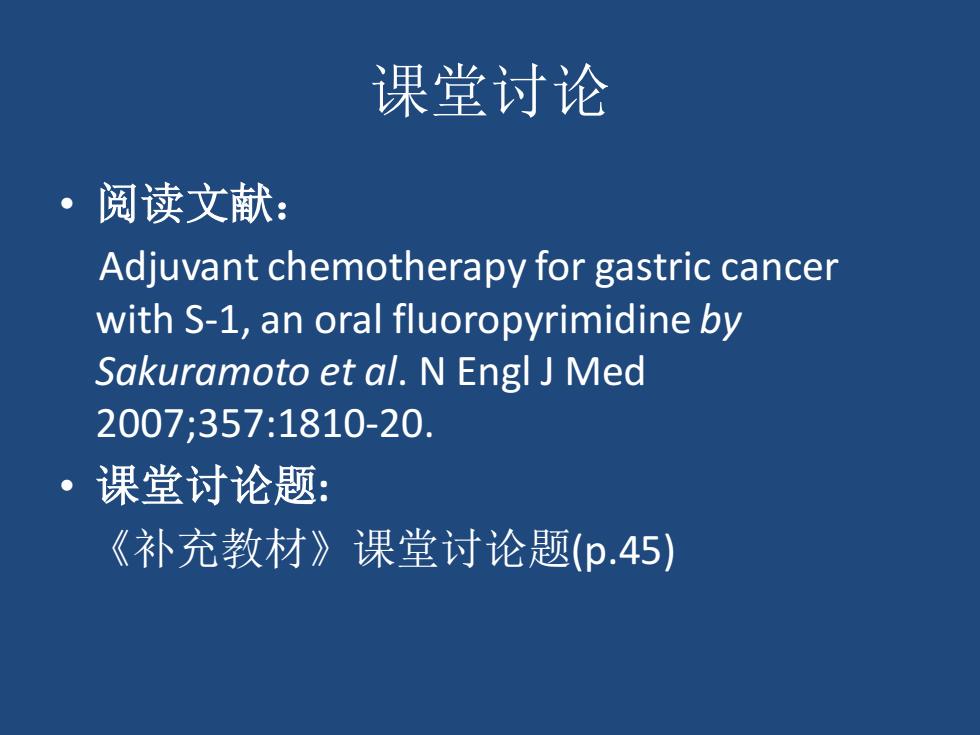
治疗性研究证据评价与应用 刘天舒 复旦大学临床流行病/循证医学中心 复旦大学附属中山医院肿瘤内科
治疗性研究证据评价与应用 刘天舒 复旦大学临床流行病/循证医学中心 复旦大学附属中山医院肿瘤内科

临床研究方法学 研究者是否预设干预? Yes No 实验性研究 观察性研究 随机? 对照组? Yes No Yes No 随机对照研究 非随机 分析性研究 描述性研究 (RCT) 对照研究 时间方向 暴露 结果 暴露 结果 暴露和结果在同时发生 队列研究 病例对照研究 横断面研究
临床研究方法学 研究者是否预设干预? Yes No 实验性研究 随机? 对照组? 观察性研究 Yes No Yes No 非随机 对照研究 分析性研究 时间方向 随机对照研究 描述性研究 (RCT) 队列研究 病例对照研究 横断面研究 暴露 结果 暴露 结果 暴露和结果在同时发生

临床科研中常见的偏倚 选择性偏倚(Selection bias) 测量性偏倚(Measurement bias) 混杂性偏倚(Confounding bias)
临床科研中常见的偏倚 选择性偏倚(Selection bias) 测量性偏倚(Measurement bias) 混杂性偏倚(Confounding bias)

机遇(Chance) ·各测量结果间受机会影响的变异度的大小。 0 使样本病人的实际观察结果和该病总体人群 的真实情况相偏离,是一种随机抽样误差。 ·偏倚可在设计,实施和分析阶段设法避免, 但机遇所致的随机误差只能设法缩小,不能 避免
机遇(Chance) • 各测量结果间受机会影响的变异度的大小。 • 使样本病人的实际观察结果和该病总体人群 的真实情况相偏离,是一种随机抽样误差。 • 偏倚可在设计,实施和分析阶段设法避免, 但机遇所致的随机误差只能设法缩小,不能 避免

准确度(Validity) 外部准确度 1.样本病人 2.将病人编组 样本偏倚 选择性偏倚 机遇 机遇 测量性偏倚 3.进行测量 机遇 混杂性偏倚 4.分析结果自 样本得出结论 5.将结论推广,应 用于其他病人。 内部准确度
准确度(Validity) 选择性偏倚 机遇 测量性偏倚 机遇 混杂性偏倚 2.将病人编组 3.进行测量 4.分析结果自 样本得出结论 外部准确度 1.样本病人 样本偏倚 机遇 5.将结论推广,应 用于其他病人。 内部准确度

Assessed for eligibility (n= Excluded(n=) Not meeting inclusion criteria(n= 研究结果报 Declined to participate(n= Other reasons (n=) 告流程图 Randomized(n=】 Consort Flow Chart) Allocated to intervention(n= Allocated to intervention (n= Received allocated intervention(n=) .Received allocated intervention(n= Did not receive allocated intervention (give Did not receive allocated intervention (give reasons)(n=) reasons)(n= dn-Mollod Lost to follow-up (give reasons)(n=) Lost to follow-up (give reasons)(n= Discontinued intervention(give reasons)(n=) Discontinued intervention(give reasons)(n= sisKjeuv Analyzed(n=) Analyzed (n= Excluded from analysis(give reasons)(n= Excluded from analysis (give reasons)(n=) 6
研究结果报 告流程图 (Consort Flow Chart) 6

课堂讨论 阅读文献: Adjuvant chemotherapy for gastric cancer with S-1,an oral fluoropyrimidine by Sakuramoto et al.N Engl J Med 2007:357:1810-20 课堂讨论题: 《补充教材》课堂讨论题(p.45)
课堂讨论 • 阅读文献: Adjuvant chemotherapy for gastric cancer with S-1, an oral fluoropyrimidine by Sakuramoto et al. N Engl J Med 2007;357:1810-20. • 课堂讨论题: 《补充教材》课堂讨论题(p.45)